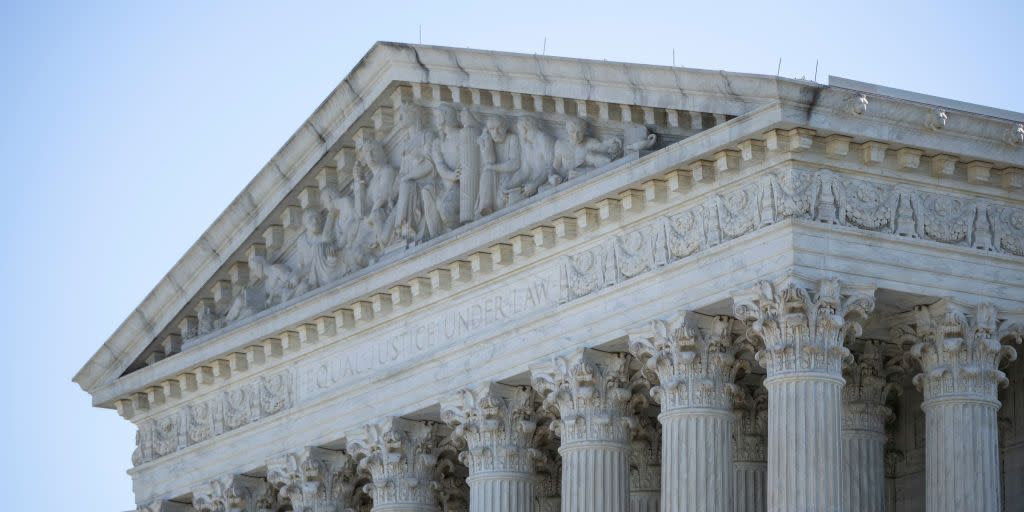In Landmark Decision, U.S. Supreme Court Overturns Roe v. Wade

- Oops!Something went wrong.Please try again later.
- Oops!Something went wrong.Please try again later.
In a 6-3 vote, with the majority opinion written by Justice Samuel Alito, the Supreme Court struck down Roe v. Wade, the landmark 1973 ruling on abortion. The decision effectively ends federal protection for abortion rights, and allows states to ban or severely restrict access to the medical procedure. Thirteen U.S. states have trigger laws, which effectively ban abortion almost immediately after the court ruling.
The court ruled on Dobbs v. Jackson Women’s Health Organization, a case that centered on a 2018 Mississippi law that makes most abortions illegal after 15 weeks of pregnancy. The law is a direct challenge to the 1992 ruling Planned Parenthood v. Casey, which ruled that "a state may not prohibit any woman from making the ultimate decision to terminate her pregnancy before viability."
Mississippi argued that 15 weeks is sufficient for fetal viability—i.e. the point at which a fetus can survive outside the womb—whereas Jackson Women’s Health Organization, the sole abortion clinic in Mississippi, argued that fetal viability is impossible at 15 weeks. According to the Washington Post, "Many of our current state and medical standards use 23 to 24 weeks as the standard for viability, but several groundbreaking studies published in the past few years have challenged that view and argued that it should be 22 weeks. As a result, more institutions are offering aggressive treatment to babies at that gestational age."
The clinic, abiding by Mississippi laws already in affect, "already does not perform abortions after 16 weeks," according to the New York Times. The "Dobbs" named as the petitioner is Mississippi's state health officer, Thomas E. Dobbs.
Mississippi asked the Supreme Court to overrule Roe v. Wade and Planned Parenthood v. Casey, which they did today. "Roe was egregiously wrong from the start," Alito wrote in the majority opinion. "It is time to heed the Constitution and return the issue of abortion to the people’s elected representatives." In a concurring statement, Justice Clarence Thomas wrote, "I join the opinion of the Court because it correctly holds that there is no constitutional right to abortion." Thomas also wrote that the court should reconsider the Griswold, Lawrence, and Obergefell rulings—decisions that protect contraception, same-sex relationships, and same-sex marriage.
The dissent was written by Justice Stephen Breyer, Justice Sonia Sotomayor, and Justice Elena Kagan. Their dissent begins, "For half a century, Roe v. Wade, and Planned Parenthood of Southeastern Pa. v. Casey, have protected the liberty and equality of women. Roe held, and Casey reaffirmed, that the Constitution safeguards a woman’s right to decide for herself whether to bear a child. Roe held, and Casey reaffirmed, that in the first stages of pregnancy, the government could not make that choice for women. The government could not control a woman’s body or the course of a woman’s life: It could not determine what the woman’s future would be. Respecting a woman as an autonomous being, and granting her full equality, meant giving her substantial choice over this most personal and most consequential of all life decisions."
In early May, Politico broke a leaked draft opinion showing that the Supreme Court intended to vote to overturn Roe v. Wade. That leak proved to be accurate today. This is not the first time the Supreme Court reversed its position and overruled its own decision, but it is perhaps the most significant reversal in decades.
You Might Also Like

